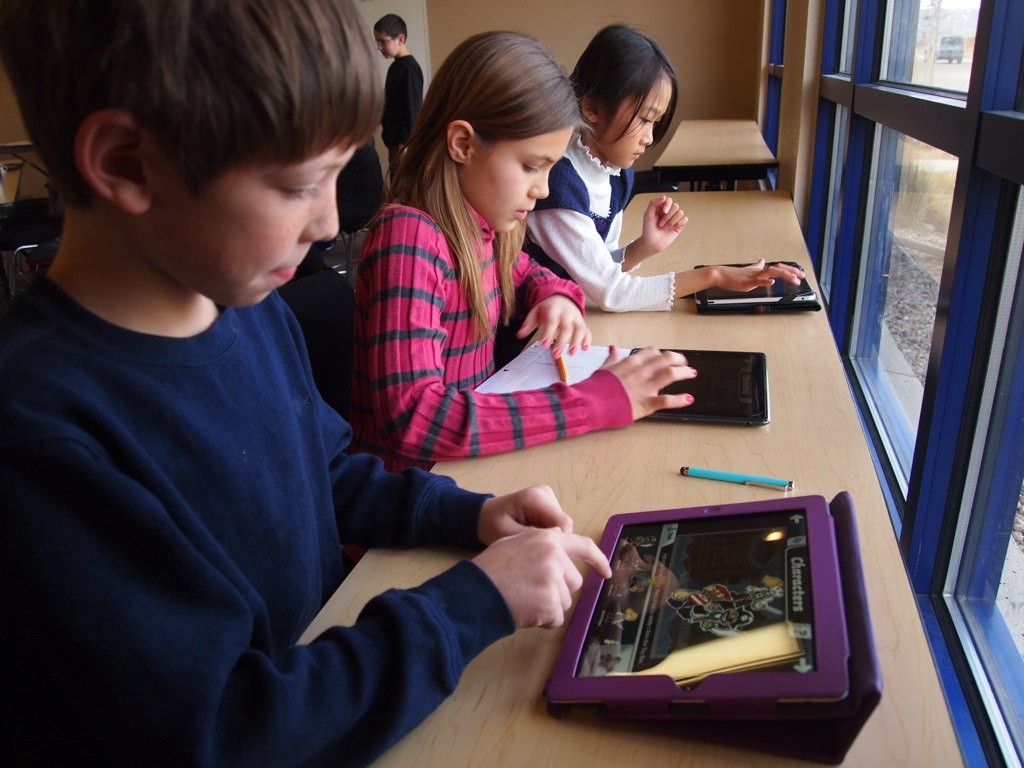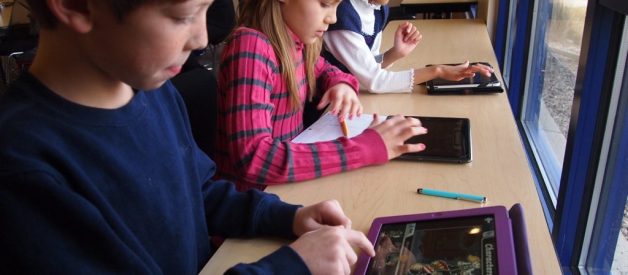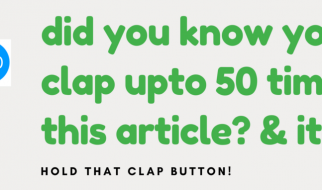In the past if you?d seen one definition of personalized learning, you?d seen? well? one definition of personalized learning. While this is a common occurrence in the early stages of disruptive innovation in any field, the lack of a consistent definition and language for a relatively complex idea has hampered both understanding and effective implementation.
 student_ipad_school ? 124 by Brad Flickinger under Attribution 2.0 Generic (CC BY 2.0)
student_ipad_school ? 124 by Brad Flickinger under Attribution 2.0 Generic (CC BY 2.0)
The situation was further complicated by the use of several terms interchangeably with personalized learning, most notably: adaptive learning, blended learning, competency-based learning, differentiated learning, and individualized learning. Today, however, most in the education community would agree that while each of these learning approaches shares attributes with personalized learning, none is synonymous.
One-line descriptions of each of the following terms offer insight into how the confusion between them and personalized learning might have arisen. Each definition overlaps in at least one key area with personalized learning.
- Adaptive learning: technology used to assign human or digital resources to learners based on their unique needs
- Individualized learning: the pace of learning is adjusted to meet the needs of individual students
- Differentiated learning: the approach to learning is adjusted to meet the needs of individual students
- Competency-based learning: learners advance through a learning pathway based on their ability to demonstrate competency, including the application and creation of knowledge along with skills and dispositions
In the desire to establish clarity around definitions and practices, we also sometimes neglect to emphasize what?s most important ? when done well, personalized learning has the potential to radically transform how we teach and learn and how we create more equitable opportunities for students.
Defining Personalized Learning
It is important to recognize that personalized learning entails more than a definition: school culture, pedagogy, curricular choices and available resources all influence the shape personalized learning takes in any given learning environment. Still, a shared definition is helpful in supporting this work. In the 2016 National Educational Technology Plan: Future Ready Learning: Reimagining the Role of Technology in Education (NETP) and the 2017 NETP Update, the flagship policy document for educational technology, the U.S. Department of Education defines personalized learning:
Personalized learning refers to instruction in which the pace of learning and the instructional approach are optimized for the needs of each learner. Learning objectives, instructional approaches, and instructional content (and its sequencing) may all vary based on learner needs. In addition, learning activities are made available that are meaningful and relevant to learners, driven by their interests and often self-initiated.
Though there are subtle differences, mostly around emphasis, the definitions of personalized learning that have been put forward recently, by organizations equally motivated to resolve field confusion, are strikingly similar to ours and to each other. Across these definitions the following similarities emerge:
- The pace of learning is adjusted
- Learning objectives, approaches, content, and tools are tailored and optimized for each learner
- Learning is driven by learner interests
- Learners are given choice in what, how, when, and where they learn
- Learning is often supported by technology
Working Definitions
U.S. Department Education?s 2016 National Educational Technology Plan (NETP) and 2017 NETP Update
Personalized learning refers to instruction in which the pace of learning and the instructional approach are optimized for the needs of each learner. Learning objectives, instructional approaches, and instructional content (and its sequencing) may all vary based on learner needs. In addition, learning activities are made available that are meaningful and relevant to learners, driven by their interests and often self-initiated.
The District Reform Support Network (District RSN), an organization formed to offer technical assistance and resources to grantees of the Race-to-the-Top-District education reform initiative funded by the U.S. Department of Education.
Personalized learning emphasizes student-driven instructional objectives, content, pace and sequencing. Ideally learning activities are frequently student-initiated, meaningful, and relevant to the learner. Personalized learning often includes the use of technology to facilitate student ownership of learning and to provide tools for individual pacing and more efficient assessments to inform and tailor instruction.
The Friday Institute for Educational Innovation at North Carolina State University
Personalization refers to instruction that is paced to learning needs, tailored to learning preferences, and tailored to the specific interests of different learners. In an environment that is fully personalized, the learning objectives and content as well as the method and pace may all vary (so personalization encompasses differentiation and individualization).
Digital Promise
Personalized learning, learning that is connected to each individual?s development, background, interests, and experiences, provides an approach that broadly and equitably supports educators? efforts to empower learners as individuals.
Personalized learning offers a path to effectively support the growing diversity of the population of students by understanding how individual learners learn best and actively engage, motivate, and inspire them with the right resources at the right time, in the right medium, and at the right pace.?
Bill & Melinda Gates Foundation, the Michael and Susan Dell Foundation, and EDUCAUSE
Personalized learning seeks to accelerate student learning by tailoring the instructional environment ? what, when, how, and where students learn ? to address the individual needs skills and interests of each student. Students can take ownership of their own learning, while also developing deep, personal connections with each other, their teachers and other adults.?
International Association for K-12 Learning Online (iNACOL)
Personalized learning means tailoring learning for each student?s strengths, needs and interests?including enabling student voice and choice in what, how, when, and where they learn?to provide flexibility and supports to ensure mastery of the highest standards possible.?
Rhode Island Personalized Learning Initiative
Personalized learning is student-centered learning approach where learning experiences are tailored to meet the unique needs and ensure strong growth of each individual student on a real-time basis.?
*Also incorporates NETP definition.
Alliance for Excellent Education
Personalized learning is a student-centered approach designed to help all students, including students from low-income families and students of color who have been traditionally underserved, develop the knowledge, skills, and abilities that will prepare them for college, a career, and life. Personalized learning means that educators develop caring and trusting relationships with their students, who, because of these relationships will put more effort into their school work and achieve at higher levels.?
LEAP Learning Framework for Personalized Learning
Personalized learning occurs when all learning is focused on, demonstrated by, and led with the learner, and connected meaningfully with mentors, peers and the community.?
Great Schools Partnership: Glossary of Education Reform
The term personalized learning, or personalization, refers to a diverse variety of educational programs, learning experiences, instructional approaches, and academic-support strategies that are intended to address the distinct learning needs, interests, aspirations, or cultural backgrounds of individual students.?
Personalized Learning in Action: The Continuous Learning Process
In addition to defining personalized learning, we want to understand how teachers, learners, and learning resources and systems work together to achieve personalized learning. Here is where learning science and researchers can work with practitioners and providers to identify what elements make the most difference in moving the needle. What does personalized learning look like in action? While the specifics of personalization can and should vary based on individual learners and their unique situations, most practitioners of personalized learning today agree that typically the same general process is followed:
1. All learners are engaged in a tailored learning experience. This could include teacher-led whole-class or small-group activities, learners working in groups or individually, and learners engaged in digital learning activities.
2. Each learner?s performance is measured. The type of learning experience determines the types of data that can be collected. For example, as learners participate in a small-group activity, the teacher might ask them targeted, open-ended, probing questions that will help in tailoring upcoming components of the lesson. When technology is used, performance can be measured continuously in real time.
3. Each learner?s performance data is interpreted against established criteria. Criteria could include learning objectives and formal standards for college and career readiness. It could also include measures of other success skills like problem solving and critical thinking.
4. Learning experiences are personalized for each learner based on data. A learning experience can be personalized by teachers or the technology-based personalized learning system or some combination of the two. In some approaches, learners can also make their own adaptations based on the data.
5. Each learner?s performance is measured again. Once a learning experience has been personalized, the teacher and a technology-based system measures performance again and the cycle repeats. Data collected is used by the teacher, and sometimes the learner, to improve the experience for the learner as well as to improve the technology-based system designed to support the personalized learning.
It?s worth noting that while each of the five components in this continuous process can be done without technology, technology makes it possible for a teacher to scale these activities consistently and accurately to more students, which is important given the practical realities of teacher-student ratios in classrooms.
Why Personalize?
What can sometimes get lost in the focus on a consistent definition and process is the potential power and benefits of personalizing learning, which are many:
- When the pace of learning is adjusted for each learner, all learners have the time needed to demonstrate mastery.
- When learning is optimized and tailored for each learner, and driven by learner interests, it can be more meaningful and relevant, which can lead to greater engagement and achievement.
- When learners are given more choice, they tend to take more ownership of their learning and develop the academic mindsets, learning strategies, and self-regulated learning behaviors that are necessary for meeting immediate goals and for lifelong learning.
- When learning is supported by technology, learners can receive more frequent and immediate feedback through formative assessments, quizzes, and checks for understanding with results provided to teachers and learners in real time.
- With the right tools, learning gaps that impede progress can be identified more quickly, allowing learners to close those gaps.
- The use of technology to provide teachers with the ability to tailor instruction to individuals allows teachers more time to provide targeted attention to learners who are struggling or who are progressing more rapidly than their peers, rather than being forced to ?teach to the middle.?
- When teachers can use technology to identify or modify existing resources more easily, teachers can then build stronger and deeper relationships with each learner and provide more resources for dealing with specific challenges. This can promote a greater sense of belonging among students by demonstrating that there are adults who care that they thrive.
There is one more important advantage to personalized learning that cannot be underestimated. We know that all learners have different abilities and experiences and will respond in unique ways to learning opportunities. An enormous challenge we face in our public education system is how to equitably recognize these differences and develop learning approaches that help all learners achieve. Creating tailored learning environments for each learner can increase equity by providing every learner what they need to be successful, regardless of race, ethnicity, first language, culture, socio-economic background, physical and mental abilities, or geography.
Conclusion
Like other educational technology terms, the definition of personalized learning is in danger of becoming diminished to the point where it becomes no more than marketing hype. We hope that the field can converge around a definition that accounts for the key aspects of a robust system discussed above, that respects learner agency and expands learning communities, and that is attuned to issues of equity. If personalized learning is to deliver on its promise, then those who implement these systems need to measure and optimized these impacts side-by-side with learning outcomes. Our approach to personalized learning needs to reflect both our aspirations and our values.
Footnotes
Some define individualized learning more broadly that is closer to the definition of personalized learning.
https://rttd.grads360.org/services/PDCService.svc/GetPDCDocumentFile?fileId=21503
http://www.fi.ncsu.edu/wp-content/uploads/2014/02/TEPLS_report-FINAL-051415.pdf
? http://digitalpromise.org/wp-content/uploads/2016/09/lps-growing_diversity_FINAL-1.pdf
?https://www.documentcloud.org/documents/1311874-personalized-learning-working-definition-fall2014.html
?http://www.inacol.org/news/what-is-personalized-learning/
?http://eduvateri.org/personalizedlearningpaper/
?http://all4ed.org/wp-content/uploads/2016/08/FINAL-Alliance-PL-Definition-2-5-16.pdf
?http://leaplearningframework.org/overview/
?http://edglossary.org/personalized-learning/
Katrina Stevens is the Deputy Director in the Office of Educational Technology at the U.S. Department of Education. She leads the work of innovative R&D in educational technology, rapid cycle evaluations, Future Ready, education innovation clusters, and developer outreach. Katrina has experience as a classroom teacher, administrator, professional developer, startup cofounder, consultant, angel investor, journalist and community organizer. She works to bring people together from across the ecosystem to make better tools for students.


